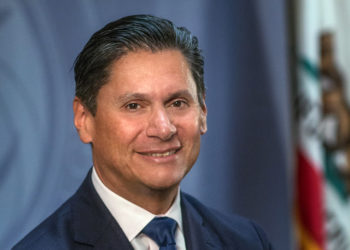
As we head toward the conclusion of another academic year, it’s important to take... Read More about Listening Tour Offers Opportunity to Discuss Vision for Success

The Master Plan for Higher Education commits California to providing a place in one of the state’s public institutions of higher learning to all those who could benefit—relying on the 115 California community colleges to serve the top 100 percent of students.
Yet current state policy allows troubling inequities: On a per-student basis, the state funds community colleges at a rate far lower than other segments of public education, and existing financial aid policy makes relatively few resources available to students to support the total cost of community college attendance.
Just 9 percent of the 2.1 million California community college students received a Cal Grant in 2017-18, compared to nearly 40 percent of undergraduate students at the University of California and approximately 36 percent of students at the California State University system.
Recent legislation to provide free tuition to first-time, full-time students for the first year, and efforts currently under way to expand it to two years is indeed welcomed and should be applauded.
But to ensure a meaningful commitment to higher education access and success, California must make a greater investment in California community college students by providing greater need-based Cal Grant support and establishing a reasonable price students pay toward their own education.
Tuition at California community colleges is the lowest in the nation, and already half of all students have these costs waived based on need. But just because tuition is free doesn’t mean that college is affordable. Expenses in a high-cost state like ours quickly escalate: housing, transportation, books and the like.
The California Community Colleges Board of Governors has approved a proposal for the 2019-20 budget to expand student financial aid based on three principles:
Nothing in our proposal would take Cal Grant resources away from California State University and University of California students, who certainly deserve the support they receive.
California is big enough, however, and farsighted enough to invest additional resources into a financial aid structure that helps more community college students cover the cost of attending college.
We are pleased that the California Student Aid Commission has agreed in principle to several of the tenants of our proposal, and we look forward to working with Gov.-elect Gavin Newsom, the incoming Legislature and other partners to crafting a solution that creates more equity and opportunity.

As we head toward the conclusion of another academic year, it’s important to take... Read More about Listening Tour Offers Opportunity to Discuss Vision for Success

Contact your legislators! That’s the message the California Community Colleges... Read More about More Financial Aid for California Community College Students Must Not Wait and You Can Help!

In March “I Can Afford College” launched two in a series of six digital-first... Read More about “I Can Afford College” Campaign’s New Latinx Youth YouTube Series